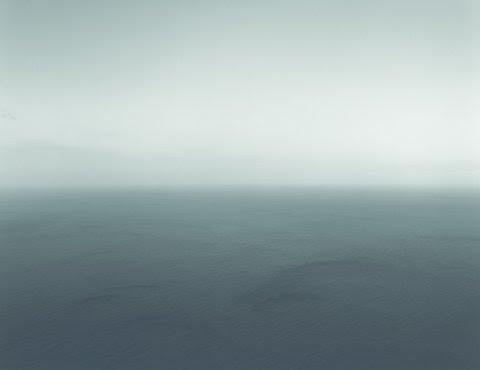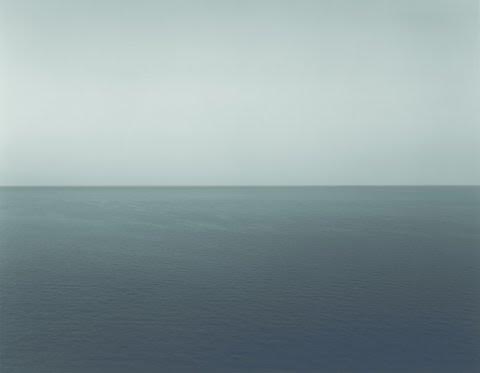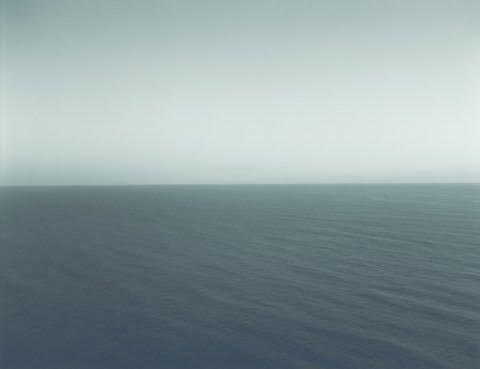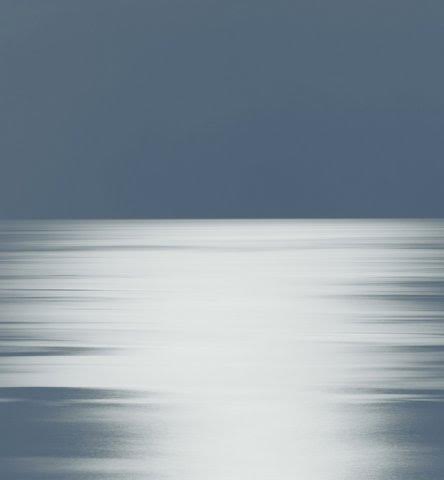blog
Book Review: Seascapes by Hiroshi Sugimoto

When it comes to photo books one always has the choice. One can start with the pictures or with the introduction to the pictures. I have no idea why I do sometimes prefer the pictures to the intro or vice versa. In the case of Seascapes by Hiroshi Sugimoto I started with the pics.
What we are shown is a series of seascapes. At first glance, the pictures didn’t differ much from one another yet the more time I spent with them the more differences I began to see. Sometimes, the line between ocean and sky completely disappears.
The pics radiate a fascinating tranquility, they do have a calming effect on me. And, to read what Hiroshi Sugimoto penned on this website (“Water and air. So very commonplace are these substances, they hardly attract attention – and yet they vouchsafe our very existence.”), fills me with a sense of being exposed to the essence of our existence.

Photographs are an invitation to ask questions. One of the first that came to mind was: Are these captions – for instance, Sea of Japan, Oki, 1987; N. Pacific Ocean, Oregon, 1985; Mirtoan Sea, Sounion, 1990 – really necessary? I’m usually very much in favour of accurate, telling, and meaningful captions. Moreover, I think that receiving as much information as possible about the process of taking pictures is helpful. However, as regards the photographes in this tome I’m not so sure.
Given that the water in the oceans is in constant flux: Do the surfaces of the Pacific Ocean and of the Atlantic Ocean really look different? Is there a discernable pattern of waves? Or does every water surface – this is what I suppose – change from one moment to the next?
Would photographer Hiroshi Sugimoto be able to identify, say, the Bay of Biscay by simply looking at a photograph? Or, the Ligurian Sea? Very probably not. So why did he feel the need to have his shots come with location captions? Maybe in order to remind himself where he was and what he was looking at when taking the photo.

Although some of the pics of water surfaces in this tome resemble each other, they do not look alike. And, it is an intriguing exercise to explore in what ways they can be discerned from one another.
In his introduction Munesuke Mita points out a parallel between Max Rothko’s paintings and Hiroshi Sugimoto’s photographs. “ … Rothko advanced to an extreme form of expression, in which he successfully eliminated reality, meaning, form, and color from his work. Rothko’s Untitled (Black on Gray) was the final painting he produced in a series that he had begun in the late sixties. The canvas is divided horizontally, with the upper half black and the lower half gray.”
As intriguingly similar they seem at first glance, paintings are paintings and photographs are photographs. Morever, again in the words of Munesuke Mita: “The difference between Seascapes and Rothko’s Untitled (Black on Gray) is … the seascape. It is the sky and the sea and their clear division. It is the air and the water with all their exuberant life. It is the minute variations in the shape of the waves, the light, and the shadows.”
To me, Seascapes is an invitation to see time, to contemplate eternity.

Seascapes
by Hiroshi Sugimoto
Introduction by Munesuke Mita
Published by Damiani and Matsumoto Editions 2015
For more information and to purchase the book:
www.damianieditore.com
www.matsumotoinc.com
Location: Online Type: Book Review
Events by Location
Post Categories
Tags
- Abstract
- Alternative process
- Architecture
- Artist Talk
- artistic residency
- Biennial
- Black and White
- Book Fair
- Car culture
- Charity
- Childhood
- Children
- Cities
- Collaboration
- Community
- Cyanotype
- Documentary
- Environment
- Event
- Exhibition
- Faith
- Family
- Fashion
- Festival
- Film Review
- Food
- Friendship
- FStop20th
- Gender
- Gun Culture
- Habitat
- Hom
- home
- journal
- Landscapes
- Lecture
- Love
- Masculinity
- Mental Health
- Migration
- Museums
- Music
- Nature
- Night
- nuclear
- p
- photographic residency
- Photomontage
- Plants
- Podcast
- Portraits
- Prairies
- Religion
- River
- Still Life
- Street Photography
- Tourism
- UFO
- Water
- Zine

Leave a Reply